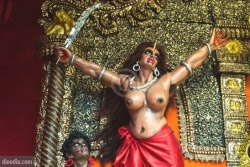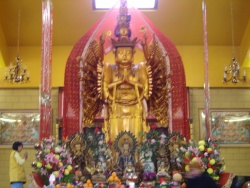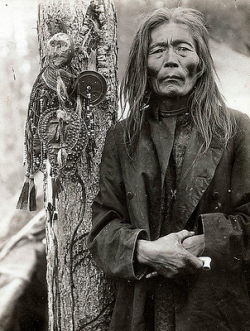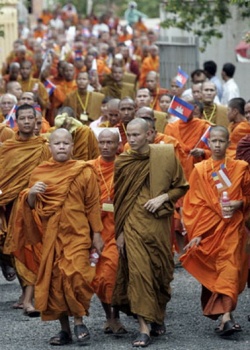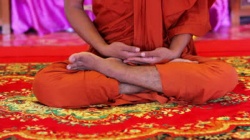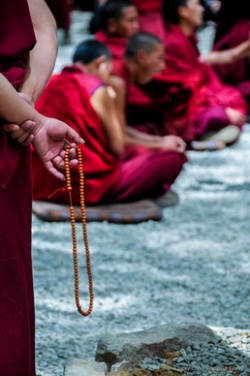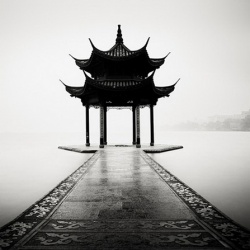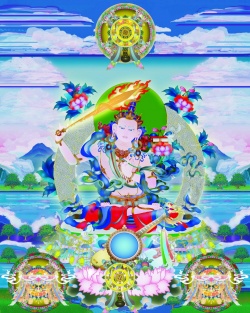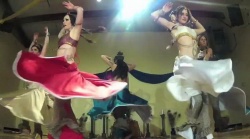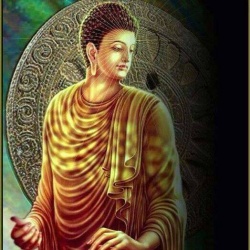Rituals for the local gods among the Bod of Paldar
Situated in the southern part of the Indian State of Jammu-and-Kashmir (Doda district, Kishtwar tahsil), to the South-West of Zanskar, the region of Paldar pertains to the Indo-Tibetan Marches. It is inhabited by two ethnic groups: on the one hand, Pahari-speakers, who are by far the more numerous,1 and on the other hand, Tibetan-speakers, who call themselves Bod (literally “Tibetans”, or more precisely “Tibet”). The former are Hindu, the latter, Buddhist (they belong to the Drukpa Kagyu order, T. ’Brug pa bka’ brgyud). While helding up Zanskar (a remote enclave of Tibetan culture) as a model to follow, the Bod emulate Pahari culture with social enhancement in view.2 By way of intermingling cultural features from both sides, they have developed a hybrid micro-culture. Confined to data collected in the sole Valley of Kabön, the present paper concentrates on one illustration of such cultural hybridity, in respect of the rituals which the Bod dedicate to their local gods.3 Indeed, although these rituals are classified by the Bod as “Pahari customs”, möntrim, Tib. mon khrims4 (a term which is also applied to the fact of singing and dancing after the Pahari fashion, wearing jewels and garments like the Pahari’s, living in houses modelled on Pahari architecture, giving Pahari personal names to children, and refraining from eating bovine meat),5 they do not strictly replicate their Pahari counterparts.
The setting
The Valley of Kabön
2Kabön is the valley of one ofthe tributaries of the Chenab River. Its inhabitants, who are exclusively Bod, claim to be the descendants of Lahuli and Zanskarpa, who settled a few generations ago on what had until then been pastureland. At present, the Bod live in four villages. In ascending order of altitude from 2900 m to 3400 m these are: Kushta, Bigneli, Odhu and the village of Kabön proper. Given that Kabön is the highest settlement, the three others are often opposed to it under the name of Thurkya, “the Bottom”. Altogether, the four Bod villages number 63 houses, where some 360 people live. Being the oldest settlement, Kabön is by far the largest: on its own, it comprises 250 people, divided into 43 houses. All these houses live from farming and cattle breeding.
3The closest neighbours of the Kabön Bod are the Pahari inhabitants of Shol (about 800 people), a large village built on the Chenab’s right bank, at the very point where Kabön stream meets the river. By what they say, the inhabitants of Shol mainly belong to the high castes of Brahman and Rajput. Most of them are Thakur, a subcaste which is said to be part of the Rajput (the Thakur frequently call themselves Rajput Thakur). The Pahari count the Valley of Kabön as pastureland. Many of them entrust one or two cows to the safe keeping of a Bod family with whom they are acquainted. Moreover, in the lower part of the valley, just above the upper boundary of the trees, the Pahari own some huts. During the summer season, several men occupy these huts with their cattle. Until a few years ago, these Pahari shepherds even cultivated fields in the immediate vicinity.
6 The relationships between the inhabitants of Zanskar and the Bod of Paldar rely on three cornersto (...)
4To the east, the sharp range which forms the Kabön’s horizon separates the valley from Zanskar, where the Bod have a number of relatives through former marriages and ancestral links. Although Zanskar is only some forty miles away from Kabön as the crow flies, the journey—which involves crossing a number of high passes—takes several days. For decades, many Bod have been following these mountain paths as traders, acting as intermediaries between the Zanskarpa and the Pahari: the former provided salt and horses, which were exchanged against the rice and cows of the latter. Through this trade, the inhabitants of Kabön—like all the Bod of the Paldar region—have kept up constant contact with the Zanskarpa, with whom they share many cultural features, in particular the same Tibetan dialect.6
The local gods and their temples
5Several of the imposing summits surrounding the Valley of Kabön are considered as “great places” (ne chenmo, Tib. gnas chen mo) or “good places“ (ne zangpo, Tib. gnas bzang po). The mountain range which separates Kabön from Zanskar, usually compared to a series of offering cakes (chotpa, Tib. mchod pa), is the abode of the goddess Tipung Deo. Not far from there, though not associated with any god, the so-called Magye Phobrang (Tib. pho brang, “palace”) is also a sacred place: people say that its depth of snow heralds a good harvest. And last but by no means least is Garara, a rocky summit in which one can distinguish the outline of a raven (phorok, Tib. pho rog) taking flight. Garara is undoubtedly the most important ne chenmo of Kabön. The villagers often claim that it has been recognised as a “secret land” (beyul, Tib. sbas yul). In accordance with this recognition, the Bod consider that Garara’s surroundings are populated by invisible mountain inhabitants which they call the beyul mi (Tib. sbas yul mi).
6Even though they are often evoked in everyday discourse, neither Tipung Deo, nor Magye Phobrang or Garara are ever worshipped. The Kabön cults are dedicated to other gods, namely Dzerung and Dekhol, who are not associated with any landscape features but with temples. Surprisingly enough, these temples are simply called lha (Tib.), as if they were the gods themselves. In Kabön, neither the Tibeto-Zanskari term lha tho nor the Hindi term mandir are in use. In the Bod’s eyes, both Dekhol and Dzerung belong to the Hindu ophidian category of nāg, which corresponds to the Tibetan lu (Tib. klu).
7For the Pahari, the name Dzerung designates any god which has special links with snow. But in Kabön, Dzerung is understood as the given name of the protector of the four Bod villages of the valley. The villagers describe Dzerung as a yulla (Tib. yul lha), “village-god”, and also as a jungla (Tib. gzhung lha), a less usual expression that we might translate as “community-god”. Considered the king of the snakes, Dzerung (often named Dzerung Nag) can supposedly be seen in the form of a snake, especially in the vicinity of his temple. The temple is built on a grassy shelf above Kabön. It is a construction made of wood, stone and corrugated iron. The top of its sloping roof is adorned with two carved tigers. Above the door, a bell is suspended. The tympan is covered with bas-reliefs showing stylised interlacing snakes and heroes of the Rāmāyaṇa epic, such as Rāvaṇa and Hanumān. Dzerung’s temple bears no resemblance to any Tibetan sanctuary. As a matter of fact, it is identical to the temples erected by the Pahari neighbours of the Bod. Besides, when the temple’s wooden panels have to be replaced, the Bod have the work done by Pahari craftsmen. As for the most basic form of showing respect towards the temple, this consists of lifting one’s hand to one’s forehead after touching the temple’s doorstep, in the Hindu manner.
8Although smaller and rougher than Dzerung’s, Dekhol’s temple is built on the same pattern. But here, the temple is covered with entangled branches and flags. It is located south of Kushta, in the forest, under an enormous boulder from the top of which a spectacular waterfall cascades. Because it is hidden from the view by numerous trees, it can be seen from hardly anywhere except the pasture dwellings occupied by Pahari in the fall. Not far from these dwellings, on the path, a red flag bearing the syllable “Om”, in Devanagari script, marks the site of the temple. The Bod believe that, a very long time ago, the first villages of the valley stood at this location. Some of them assert that Dekhol dates back to these legendary times. Nowadays, Dekhol is worshipped by the Bod as well as by the Pahari: all of them see him as a provider of calves and, hence, as a milk-supplier. The Kabön Bod count him as jönla, Tib. bzhon lha, literally “god of the milkers”. It should be noted that in some other Bod valleys, the functions of both yulla and jönla are held by one and the same god.
The cults dedicated to the local gods of Kabön
The yearly ritual calendar
9In the Hindu locality of Shol, the five village temples are visited by their priest (called pujar, Hind. Pujārī) at least three times a week, for offerings of locally-made incense (called dhup, Hind. dhūp). This is not the case in Kabön, where Dzerung and Dekhol are paid neither daily nor weekly homage. In case of illness or any other kind of problems, private offerings of flour, butter or money might be brought to Dzerung, but such individual initiatives do not seem to occur very often.
7 See Table.
8 By contrast, the villagers follow the Tibetan calendar as far as New Year celebrations and Buddhis (...)
10In contrast, the performance of collective annual rituals dedicated to Dzerung and Dekhol, called the “days of the gods” (lhejak, Tib. lha’i zhag), may not be omitted.7 Except for the New Year greetings, all the celebrations are Pahari: the Bod usually call them by Pahari names and they keep their dates in the Hindu calendar.8 However, the Bod ritual calendar is not the exact replica of the Pahari’s ritual calendar. All the evidence suggests that the Bod have adopted only those rituals which, in accordance with their dates, can be interpreted as turning points in Kabön’s farming life. Thus, a mere glance shows that the days on which either Dzerung or Dekhol are worshipped correlate closely with the agricultural tasks: Drishu is celebrated in the spring, just before farming begins; the end of Sangmeda coincides with the end of the period spent on the high pasture; Nague marks the beginning of haymaking and harvesting; Barshot, which is supposed to assure good crops, is performed in the middle of harvesting; and last, in the fall, Pholat marks the conclusion of the work in the fields and opens the milling activities. Of course, in the Pahari villages, where barley, wheat and buckwheat are replaced by rice, maize and millet, the same rituals are not linked with these economic activities. In fact, to the best of my knowledge, several of these rituals in the Pahari milieu seem to have no association whatsoever with the agrarian or pastoral cycle.
9 Gaborieau (1982) has shown how cross-references are a structural characteristic of Hindu ritual ca (...)
11Although the Bod did not adopt the Pahari ritual calendar as a whole, the Bod ritual framework remains typically Hindu insofar as its various dates are in no way independent of each other.9 In a number of cases, ritual events correspond to one another, in such a way that they delimit ritual periods. The most striking example is that of the winter and spring rituals, Uttrain and Drishu, between which no agrarian work is performed, the villagers have to abstain from the consumption of cow’s milk, butter and yoghurt, and the temples remain closed (as the gods are believed to be fasting as well). In other respects, the rituals of Uttrain, Drishu, Nague and Pholat are said to be connected, given that the four of them are celebrated on the first days of Hindu months.
12A few local cults (such as the summer fast of Sangmeda) are family affairs: they are the responsibility of the senior man in each house. But, in the majority of cases, even though every house participates in the offerings, the rituals are conducted by a pujar. Kabön has two pujar, who are attached to Dzerung and Dekhol respectively. The pujar’s abilities consist in invocations and ritual gestures, based on oral knowledge. Following the example of their Pahari neighbours, the Bod transmit the office of pujar from father to son. The pujar’s legitimacy clearly stems from the role their houses played in the village foundation. Thus, while Dekhol’s officiant is the descendant of the founder of Kushta hamlet, Dzerung’s officiant is the descendant of the very first founder of Kabön, so that he acts simultaneously as village headman.
The performance of Nague ritual
10 I could not establish the etymology of the name dhabri. It probably belongs to Paddri, the Pahari (...)
11 I was told that in Ganir, another Bod valley parallel to Kabön, things go the other way round: Nag (...)
12 Berreman (1960, p. 777; Verma (1998, p. 75); Chaudhry (1998, p. 255).
13Since the performances are much the same from one ritual to the next, rather than delving deep into each of the cults dedicated to Dzerung and Dekhol (which would imply numerous repetitions), I shall confine myself to a discussion of the Nague ritual. Of the Bod summer celebrations, all of which I attended in 1999, Nague proved to be the most important. It is the only ritual which still involves the participation of the inhabitants of Kabön itself as well as the Bod who live in Kushta, Bigneli and Odhu. On the occasion of Nague, numerous Kabönpa (i.e. natives of Kabön) who now live in big cities such as Kishtwar, Jammu or Manali come back to Kabön. Moreover, Nague is also attended by Pahari participants, among whom there are tradesmen (peddlers of apples and sweets) and villagers who come for the entertainment and also mediums, dhabri,10 who go into trance.11 It must be noted that among the Pahari of Paldar, whereas the Brahmans are less central than they are in Sanskritic Hinduism, the mediums, who mostly belong to low castes, quite evidently play a major role. There is nothing surprising about that: all authors who deal with Pahari regions report a similar situation.12
13 As usual in the Tibetan world, the so-called sadak, “masters of the soil”, are particularly presen (...)
14 The Zanskari surupa is equivalent to the Tibetan tsha gsur or gsur, with which it is clearly cogna (...)
14On the morning of Nague, the first thing to be done on each farm estate is to honour the fields sadak (Tib. sa bdag),13 with offerings which are familiar to Tibetologists: juniper (shukpa, Tib. shug pa), cone-shaped dough (called dranggye, Tib. ’brang rgyas, “breast”) and surupa (flammable powder made out of butter, milk and sugar).14 Then, some barley is cut and gathered with flowers. These colourful bunches are called shrupla (Tib. srub lha), literally “the harvest first fruits for the god[s]”.
15 It is nevertheless a fact that in the Himalayas the use of juniper for fumigation is not peculiar (...)
15Once everybody is ready, a procession of men climbs from the village to Dzerung’s temple, to the accompaniment of two drums. While one man from each house carries the shrupla bunches, the pujar brings some juniper. Note should be taken that the Bod pujar always use juniper (shukpa, Tib. shug pa) as in Tibetan fumigations (lha bsang) instead of the incense which is the offering par excellence made to the gods by the Pahari pujar. Since this has nothing to do with the matter of local availability—the Pahari incense is prepared from the roots of a high-altitude plant, gugul (Tib. gu gul) or Amyris agallocha, provided by the Bod themselves—, the Bod substitution of juniper for gugul could well be interpreted as a Tibetan feature.15
16 The srinpo (Tib. srin po) are Tibetan-type malevolent beings which frequent mountainsides. Phu sri (...)
17 The animals offered at Nague and Pholat are supplied in turn by the inhabitants of Kabön proper, w (...)
18 Usually, the house has to share half of the meat with Dzerung’s medium. But in 1999, the latter di (...)
19 The Kabönpa are well acquainted with Shiva. They see him as an ascetic, hashish-smoker, whose flut (...)
16Next, the pujar takes a bell and several tridents from the temple. Holding these paraphernalia and the burning juniper, he performs a triple circumambulation of the temple. During each round, the pujar stops at differents spots, in particular at the temple’s corners. Looking towards the temple, he asks for Dzerung’s protection, after which he sometimes turns to the outside to address prayers to other beings such as Phu srinpo, Chohal srinpo and Kali (Hind. Kālī), the Hindu goddess who protects the village of Shol.16 Back at the temple door, the pujar is presented with the sheep that is to be killed on behalf of all the villagers. The sheep is provided by the Kabönpa according to a household roster.17 The pujar is not the one who cuts the throat of the sheep but, just before the sacrifice, he pours water onto the sheep’s mouth, ears and croup, to make the animal shake itself in sign of acceptance. For himself, he receives the animal’s head, skin and one of its legs. The remaining meat goes to the house which has brought the animal.18 Once the sacrifice is over, some young men adorn the temple with the shrupla bunches. As for the pujar, the drummers and a few other fathers, they go back to the village to pay a quick homage to the protector of the oldest house of the village, who is none other but Shiva (Hind. Śiva).19
17After lunch, the crowd slowly gathers in front of Dzerung’s temple. In 1999, it totalled more than three hundred people, which was about as much as the whole population of the valley. A conchshell is blown to announce the mediums’ trance. The two Pahari mediums (dhabri) are respectively Shiva’s and Kali’s. First, both of them are shaken by convulsive movements: among other things, they shout and beat their backs with iron whips. Second, the mediums dance on the temple’s meadow, carrying around tridents and a vase filled with the sacrified sheep’s blood: some of this blood is poured around and some is greedily drunk by the goddess Kali. The third and last phase of the trance consists in forecasting and making recommendations: in 1999, Kali’s medium promised good crops and required the villagers’ devotion. Concurrently with the mediums’ trance, a round dance, called sheni, is performed three times in the afternoon. It is led by the pujar, who carries a ceremonial axe said to keep the srinpo at a distance. Until a few years ago, members of the nine original houses of Kabön used to dance behind the pujar; at present, there are only four who still dance the sheni. Gradually, as the dance goes, the circle of dancers grows: the girls of the village participate in great numbers, swaying their bodies half way round at each step, after the Pahari fashion. The sheni dance has to be accompanied by two ritual drums: the drummers are villagers designated on a rota basis, though it may happen that a Pahari visitor will beat the drum for a moment. Pahari flute players also take part in the round. Along with these Pahari musicians, a few Pahari men join the dance. Finally, the dancers file past Kali’s medium, who touches their shoulders with his iron whips, bell and ritual vase.
18Whereas the Pahari count Nague as a hill festival which welcomes winter, the Bod see it as a harvest ritual. According to them, its main significance lies in the offering of the ceremonial bunches to Dzerung Nag. This assertion is eloquent, since the offering of the harvest first fruits (shrupla) is obviously a Bod addition to Nague in imitation of a Zanskari cult which is itself called shrupla (in Zanskar, the shrupla celebration occurs at the time of harvesting and consists in offering handfuls of barley and wheat to the village-god; from this day on, the use of sickle, essential for haymaking, is allowed).
Local cults vis-à-vis Buddhism
20 The only Buddhist monk (lama, Tib. bla ma) who stays in Kabön all along the year comes from Zanska (...)
21 Born in Kabön some 60 years ago, Chöphel is the only lay devotee (trapa, Tib. grwa pa) of the vall (...)
19As has been illustrated throughout this article, the local cults which are celebrated in Kabön remain beyond the control of the Buddhist clergymen. Neither the monk who is appointed every three years as a ritual performer by the Zanskari monastery of Bardan,20 nor the native lay devotee who lives in a tiny cell which adjoins the Buddhist sanctuary of Kabön21 play any role during the “days of the gods” (unlike what occurs in Zanskar, where the monks do take part in the local cults by fumigations). Admittedly, in the 1970s, Zanskari monks regularly prompted the Bod to give up the animal sacrifices which their local cults involved, just as Tibetan masters sermonised the Zanskarpa on the same subject at about the same time. However, the two scenarios did not lead to the same outcome. Whereas the Zanskarpa abandoned the sacrifices once and for all, the Kabönpa did not: after having replaced bloody practices by offerings of sweets, they restored them soon afterwards because of heavy rains and harvest failure which were interpreted as signs of the gods’ discontent. Mention need hardly be made of the major role played in the turn of events by the Hindu mediums: as the spokesmen of the gods, they could easily counter the monastic position. This being the case, the matter is not closed, since the Bod remain torn: on the one hand, they admit they cannot but perform sacrifices to placate their bloodthirsty gods; on the other hand, they lament the fact that this obliges them to violate Buddhist dictates.
20In the future, it might well be that this dilemma is played out on the ritual scene, all the more so since the mediums’ performances are openly minimised and denigrated by a number of Bod: the mediums have no sense of decency, they say, as they publicly remove their shirts; their trance is not real possession, since the mediums have to drink alcohol to enter into the appropriate state (a statement which the evidence refutes); and finally, their predictions are not reliable (who knows if they are not lying?). Do these hostile comments sound the death-knell of the ritual involvement of mediums in Kabön? Although I would be reluctant to make any predictions on this score, I am inclined to believe that they do, in the light of recent conflicts between Bod and Pahari in the nearby region of Pangi, bringing about a ritual separation of the two communities and the abandonment of sacrifice on the part of the Bod.
